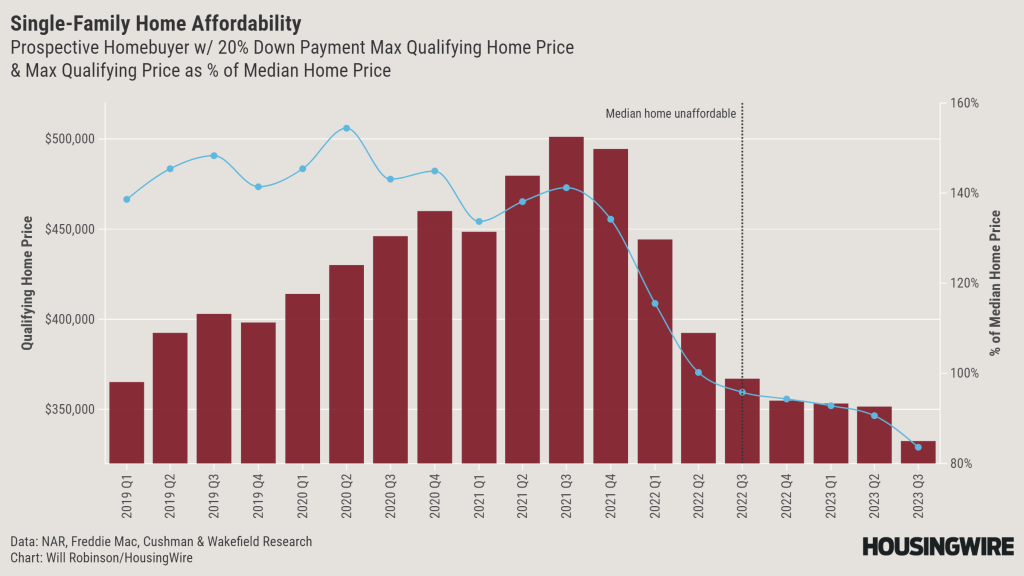Earlier this month, real estate investment management firm Pretium Partners raised $1 billion to acquire build-to-rent homes, bringing its total investment in the sector to $2.5 billion.
The investment was needed to chip away at a pronounced national housing shortage caused by “decades of under-building and under-investment,” according to Josh Pristaw, Pretium’s head of real estate.
Pretium’s new fund came on the heels of private equity giant Blackstone’s decision in January to acquire Tricon Residential in a deal valued at around $3.5 billion. Tricon owns more than 37,000 homes and is building about 2,500 more.
Blackstone had already invested heavily in the single-family rental space when it bought Home Partners of America in a deal that valued the company at $6 billion in 2021. The deal came on the front end of market hype about the build-to-rent space, which cooled somewhat in 2023 as higher interest rates prompted a pullback by builders.
But 2024’s deals show investor interest has persisted.
Cushman & Wakefield, which manages more than 8,000 build-to-rent units, believes “institutionalization is imminent” for the sector as powerhouses like Blackstone get more involved and as the tandem of tight for-sale inventories and high home prices keep rental demand high, according to a pair of reports the company published in December.
The reports note that Millennials are reaching the typical age of homebuying at a time when a prospective homebuyer who can pay a 20% down payment and can pay the equivalent of the going market rent towards a monthly mortgage payment would not even qualify for the median home in the U.S.
Many of those would-be homebuyers want to “graduate” from apartments to homes, but unable to buy them, they are turning to home rentals.
A small but growing sector
Cushman & Wakefield notes build-to-rent homes have become “increasingly attractive to the investment community,” with sales of build-to-rent communities reaching $3 billion in 2022.
Sales were half that in 2023, but the commercial real estate brokerage notes that $1.5 billion in sales is still 40% above 2019 levels. In the multifamily space, by contrast sales are down 65% from where they were in 2019.
Those sales include “major buyers” like Inland, Blackstone, Starwood and American Realty Advisors, the company pointed out in its report.
CBRE, too, expects build-to-rent sales to grow but notes that the sector is still dwarfed by the multifamily sector. In 2022, build-to-rent transactions totaled about $2.1 billion (lower than Cushman & Wakefield’s estimate), while multifamily transactions totaled about $279 billion, according to CBRE.
Similarly, construction has slowed but remains elevated. The number of units under construction peaked in the fourth quarter of 2022 at above 53,000 and fell to about 36,500 in the fourth quarter of 2023, according to Cushman & Wakefield.
Even at the reduced pace of construction, that still means about 20% of all build-to-rent inventory is under construction today. The sector equates to just 1% of existing multifamily inventory.
Cushman & Wakefield further states that it would take a year and a half to fully absorb all build-to-rent construction, versus almost four years to absorb all multifamily construction, leading the company to conclude that the build-to-rent sector “may quickly become under-supplied as construction starts dwindle.”
The multifamily sector experienced a construction boom after rents soared, and rent growth has since normalized.
Hotspots
The growth of the build-to-rent sector has been heavily concentrated in a few states, according to a report published in January by the National Rental Home Council and Yardi Matrix.
In the 31 states included in Yardi Matrix’s data, only seven added 1,000 or more build-to-rent units last year.
Even within those states, there were high concentrations of construction:
That leaves many locales largely untouched by the sector to date.
As long as a shortage of for-home sales exists, Cushman & Wakefield, NRHC and others see a bright future for the nascent build-to-rent industry.
“Build-to-rent housing is quickly emerging as an essential, and highly desirable, sector of America’s housing market,” NRHC CEO David Howard said in a statement. “With the U.S. housing market facing inventory and supply shortages of near historic proportions, leasing a newly built single-family home in a dedicated community with a range of neighborhood and in-home amenities is an option that appeals to an increasing number of families.”
Cushman & Wakefield’s Head of Multifamily Insights Sam Tenenbaum agrees.
“With the sector in relative infancy, the opportunity to buy and build [build-to-rent] communities remains wide open,” he wrote in the company’s report. “The demographic tailwinds remain robust, and while the capital markets remain challenged in the rising interest rate environment, the sector is poised to grow further. It has already attracted some of the biggest funds in U.S. real estate, and the growth trajectory appears bright.”





